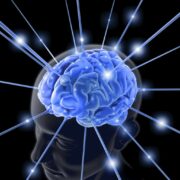Everything you see in the mirror-from your height to your hair color to the dimple (or lack thereof) on your chin-is written into nearly every cell of your DNA, spiraling chains of proteins found in every cell in your body. Think of DNA as your body’s instruction manual. It tells your cells how to grow into organs, hair, teeth, fingernails, your tongue, and every single other part of your body. Stretches of DNA (called genes) are like pages in that instruction manual. Genes control what you will look like, plus less obvious traits such as whether you have perfect vision or the ability to curl your tongue.

Where did I get my genes?
While you admire your good looks in the mirror, don’t forget to thank your parents. Genes come in pairs: one from Mom and the other from Dad. It’s the combinations of genes that bring about or “express”-various physical traits (in a process called heredity). Some genes are more influential on your appearance than others. The genes for dark hair are dominant over the genes for red and blond hair, making dark hair more common. 
Do animals have DNA?
Yes, all of them do, actually. And not just animals. Every living thing on Earth-includ- ing single-celled bacteria, trees, and plants-has DNA in its cells. You might expect to share many genes with a chimpanzee or bonobo, our closest living relatives, but did you know you also share genes with that banana the chimp is chomping?
HOW Similar AM I GENETICALLY….
..A CHIMPANZEE? 96-99%
Humans and chimps split from a common ancestor between 13 and 6 million years ago.

..A FRUIT FLY? 60%
Consider this the next time you swat that itty-bitty bug buzzing around your cantaloupe: You and that fly are related! (So are you and the cantaloupe.) Fruit flies and humans share many basic genes, along with some genes that might make you more vulnerable to cancer. In fact, scientists are studying fruit flies for clues to beating cancer.

MY PET DOG? 82%
Dogs might be “man’s best friend,” but read on for the shocking truth.

.. MY PET CAT? 90%
It turns out humans share more genes with felines than with Fido.

… A BANANA? 50%
No, this doesn’t mean you’re half banana. All life-forms on Earth share fundamental features and functions at the cellular level. Sharing half our genes with a banana just shows that we evolved from a common ancestor more than a billion years ago.

Why do some kids look less like their parents than other kids do?
You can’t always guess a child’s appearance just by looking at his or her parents. The study of genes called genetics-is achieving breakthroughs all the time, but much about heredity remains mysterious. Combinations of genes can affect other genes, leading to unpredictable characteristics or features that lurk in the genetic background for several generations. Our genes are also riddled with so-called junk DNA that doesn’t seem to express itself in any noticeable way. Environment and diet also play a large role in shaping a person’s weight, skin tone, and other physical characteristics.

Comments